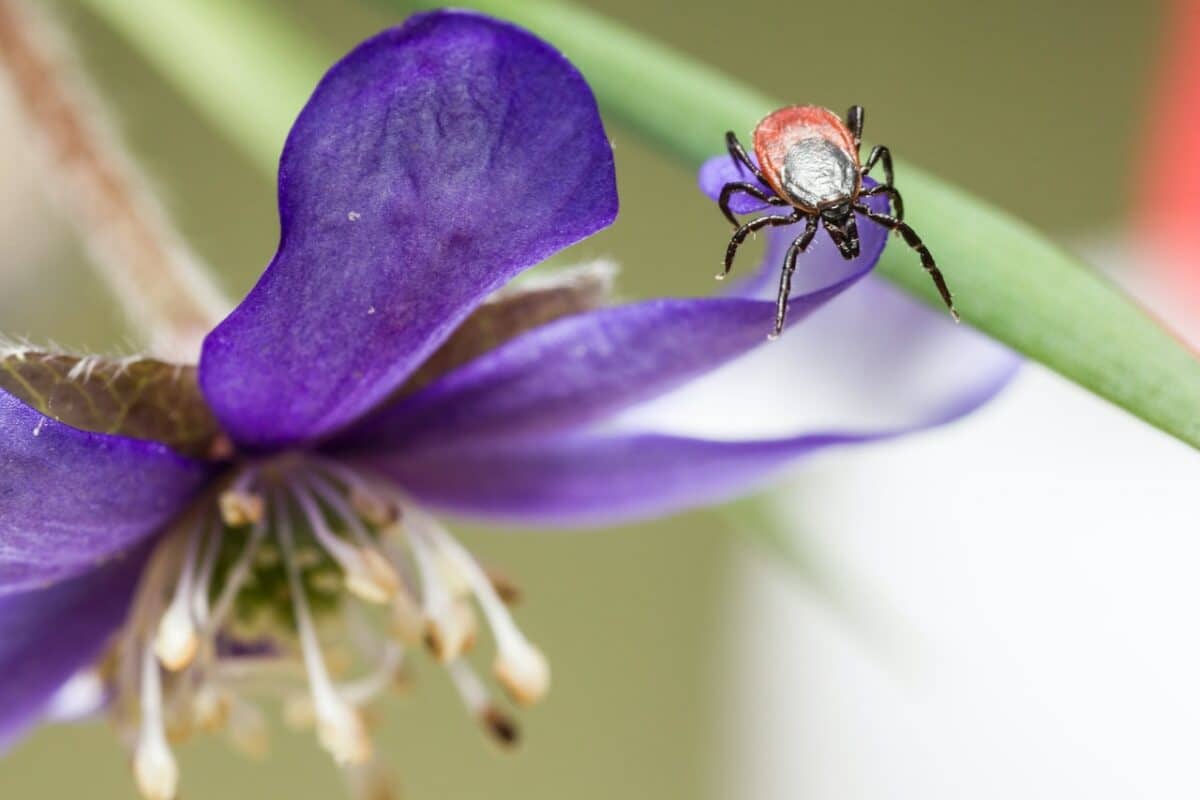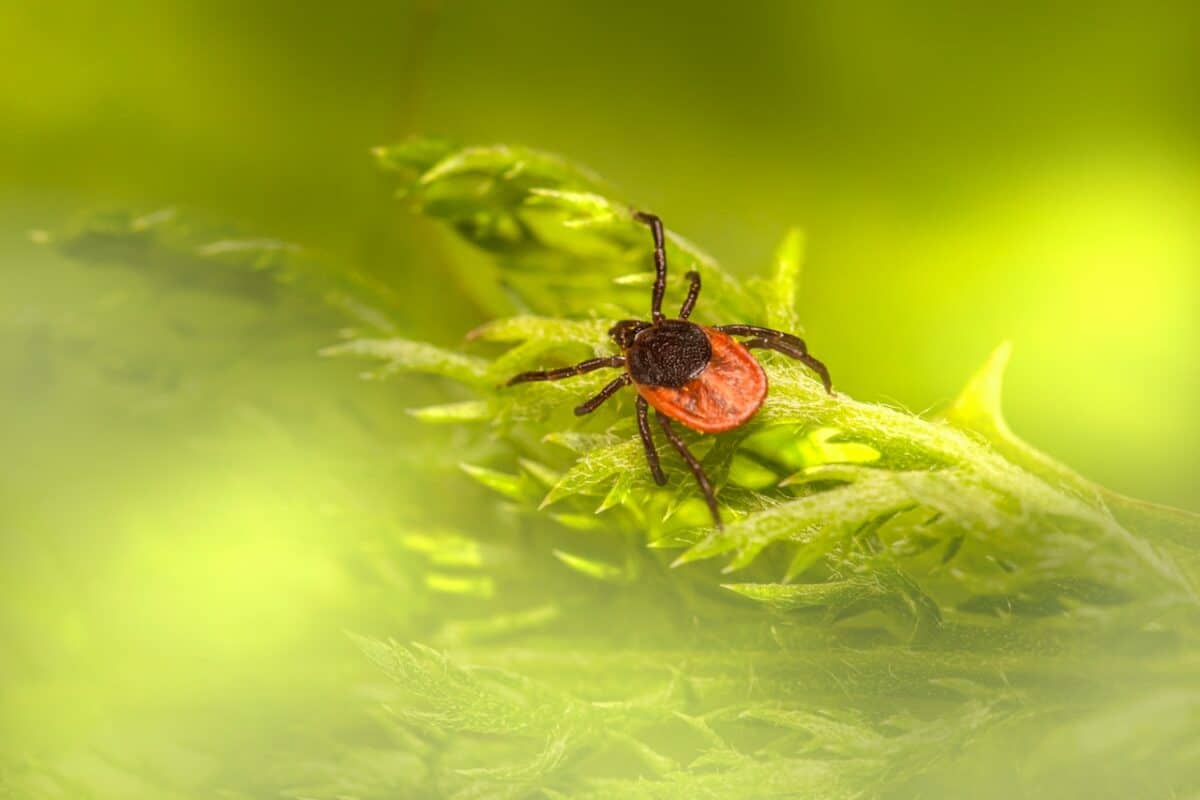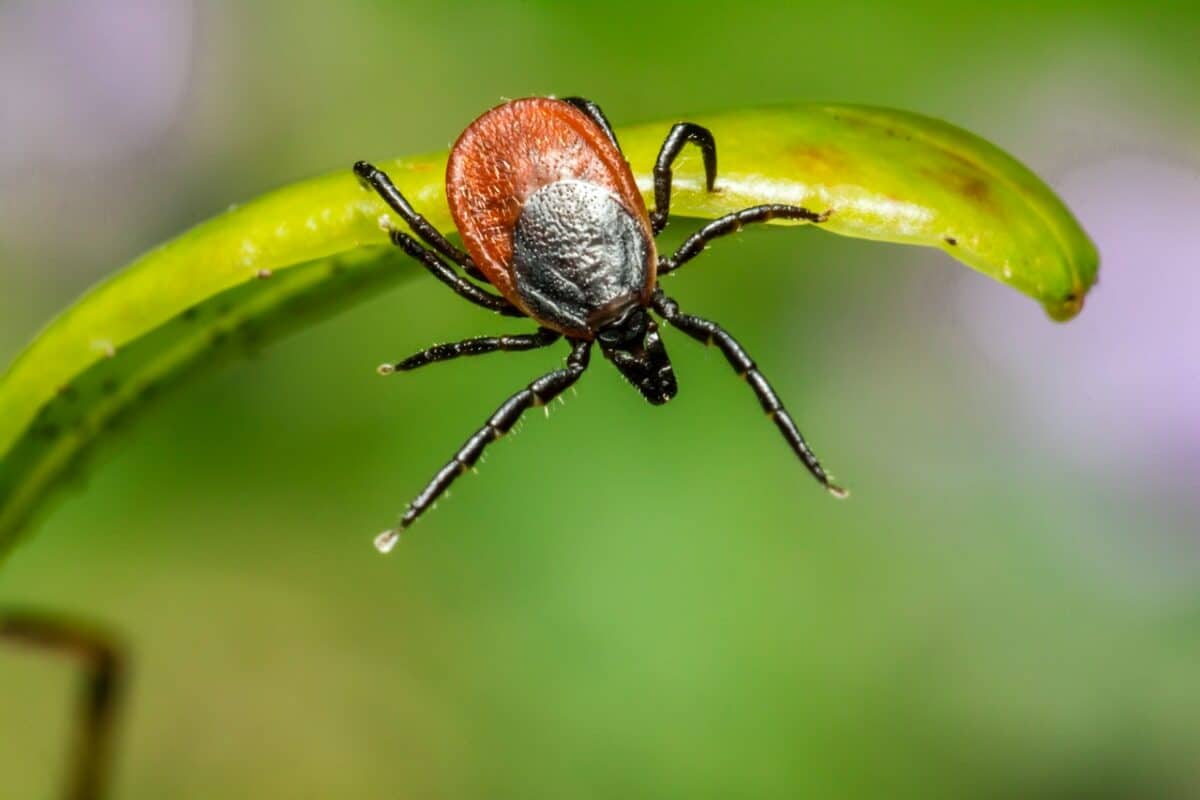Ticks are tiny, blood-sucking creatures that can be found in a variety of habitats all over the world. While they may seem harmless, they are carriers of several serious diseases that can affect both humans and animals.
This article will examine what ticks look like and how to protect yourself from their bites. We also reveal the information you need to identify ticks and understand the risks associated with their tastes.
Whether you’re a hiker, a pet owner, or simply someone who wants to stay safe while enjoying the great outdoors, this article will help you stay informed and prepared.
Physical Appearance
Ticks are small, eight-legged creatures that are typically brown or black. They have a round, plump body and a small head with a pair of mandibles that they use to grip onto their hosts.
Ticks range in size from a tiny pinhead to the size of a raisin, depending on the species and their life stage.
Size comparison to everyday objects
It is important to note that ticks can be surprisingly small. To give you an idea of their size, one can imagine a tick nymph, the minor stage in its life cycle, as being about the size of a sesame seed or a poppy seed. This small size can make them easy to miss, but their impact can be significant.
Adult ticks, however, are slightly larger but still relatively small. They can be about the size of a small grape or a pencil eraser.
Despite their size, they can still threaten humans and animals significantly. This is why it is crucial to regularly check for ticks, especially after spending time outdoors in wooded areas.
Variations in appearance based on species and life stage
When it comes to ticks, they all look the same. But there’s much more to them than meets the eye! Did you know there are many different species of ticks, each with its unique look and life cycle?
It’s like the tick world has its version of a fashion show!
Some ticks are simple and understated, with solid brown or black bodies. Others are more daring and adventurous, with patterned bodies featuring light and dark bands or stripes. It’s like the tick world is divided into the minimalist and maximalist camps!
As a tick grows and molts through its various life stages, its appearance can change, as a caterpillar transforms into a butterfly. Not only do ticks come in different species with varying appearances, but they also have different habits and habitats.
For example, some species of ticks prefer to live in tall grass and shrubs, while others are found in forests or deserts.
Additionally, some species of ticks are active during the day, while others are active at night. And, of course, different species of ticks feed on different hosts, ranging from small rodents to large mammals and even humans.
So, as you can see, ticks are much more than just tiny, blood-sucking creatures. They are complex beings with unique characteristics, behaviors, and environments. And unfortunately, they also play a significant role in transmitting diseases, which is why it’s so important to take precautions and prevent tick bites.
Understanding Tick Behavior

Ticks are more than just tiny, creepy crawly creatures – they have a complex life cycle and feeding habits that make them unique. Let’s look at what makes ticks tick (pun intended!).
Life cycle and feeding habits
Ticks go through four life stages as they grow and mature: egg, larva, nymph, and adult. At each stage, they feed on the blood of their hosts to grow and develop.
A tick’s time in each stage of its life cycle can vary depending on the species, temperature, and humidity. And, like vampires, ticks are always on the lookout for their next meal. But, instead of castles, they look for hosts in tall grass, forests, deserts, and even in your backyard.
How ticks attach to their hosts
When a tick finds a suitable host, it goes into action. The tick will climb onto the host’s skin, searching for the perfect spot to attach and feed.
Using its tiny mandibles, the tick will grip onto the host’s skin and burrow its feeding tube into the host’s flesh. Ticks have barbed mouth parts that help them stay attached even as the host moves around. It’s like they’re gripping on for dear life!
How long do ticks stay attached
The length of time a tick stays attached to its host depends on several factors, including the species of tick, the host’s immune response, and the tick’s life cycle stage. Some ticks can feed for several days, while others feed for just a few hours.
But, no matter how long they feed, one thing is for sure – they’ll leave behind a little more than just a bite mark. Good to know for What Does a Tick Look Like.
Common species of Ticks found in different regions

Ticks come in various species, each with unique traits and preferred habitats. Some of the most frequently encountered tick species in North America are:
- Black-legged tick: Also referred to as the deer tick, this species is reddish-brown and has black legs.
- Lone Star ticks: This species is larger compared to the others and can be easily recognized by the white spot on its back.
- American dog tick: This species is commonly found on dogs, as the name suggests, and is known to transmit various diseases.
Like North America, other parts of the world, including Europe, Asia, and South America, also have their common tick species.
Protecting Yourself from Ticks
Tick-tock, tick-tock, the clock is ticking on the potential dangers of tick bites. Don’t let these tiny pests put a damper on your outdoor adventures. Learn how to protect yourself and stay one step ahead with these simple preventative measures.
Protective clothing
When spending time in tick-prone areas, wearing protective clothing is important. This can include long pants, sleeves, and light-colored clothing, making it easier to spot ticks.
Opt for clothing made from tight-weave fabrics, as ticks have more difficulty getting through the fabric. You can also treat your clothing with permethrin, an insecticide that provides long-lasting protection against ticks.
Repellents
Using insect repellent is another effective way to protect yourself from tick bites. Repellents that contain DEET or picaridin are effective against ticks, as are natural options such as the oil of lemon eucalyptus. Be sure to follow the product label instructions when using any insect repellent.
Regular Tick Checks
Conducting regular tick checks is another crucial step in protecting yourself from ticks. This involves checking your entire body, including hard-to-see areas like your scalp, groin, and armpits. You should also inspect your clothing and gear and carefully remove any ticks you find.
Pet Protection
Remember to protect your furry friends! Pets can bring ticks into your home, so be sure to use tick preventatives and check them regularly for ticks.
Various tick preventatives are available for pets, including topical treatments, collars, and chews. Talk to your veterinarian to find the best option for your pet.
By taking these preventative measures, you can reduce your risk of tick bites and protect yourself from the diseases that ticks can carry. So, whether hiking, camping, or just enjoying a relaxing afternoon in the backyard, be mindful of ticks and take the necessary steps to stay tick-free.
What is the Importance of removing ticks promptly?

While this creepy crawlies may seem small and harmless, they can significantly risk your health and well-being. That’s why removing ticks promptly is so important when you discover them on your body.
If a tick bites you, your risk of contracting a disease depends on how long the tick is attached. The longer a tick remains attached, the greater the chance it will transmit a disease-causing organism into your bloodstream. For this reason, it’s crucial to remove ticks as soon as possible.
But how do you remove a tick?
First, take hold of the tick with fine-tipped tweezers as close to your skin as feasible. Next, extract the tick steadily, taking care not to compress its body as it may force disease-causing microorganisms into your bloodstream.
Once the tick is removed, cleanse the bite location with soap and water, and then use an antiseptic on the affected area.
What are Common Illnesses Transmitted by Ticks?

The next point on What Does a Tick Look Like. Ticks are tiny, but the illnesses they carry are not to be underestimated. They can leave you feeling sick and miserable, so knowing the common diseases they transmit is essential.
If you are ready to protect yourself and your loved ones, tag along as we dive in and discover the dangers lurking in the great outdoors.
#1 Lyme Disease
This sneaky infection can cause fever, headache, fatigue, and a telltale bull’s eye rash that will have you feeling like you’ve been hit by a truck.
#2 Rocky Mountain Spotted Fever
Imagine feeling feverish, aching, and covered in a rash that spreads from your wrists and ankles. This is what Rocky Mountain Spotted Fever can do to you.
#3 Ehrlichiosis
This sneaky bacterial infection can leave you feeling fatigued, with headaches and muscle aches that won’t quit.
#4 Babesiosis
A parasite infection can give you chills, headaches, and muscle aches that will have you begging for relief.
It’s worth mentioning that not everyone who is bitten by a tick will develop symptoms, and sometimes the symptoms can be similar to other illnesses. So, if you experience any unusual symptoms after a tick bite, it’s always best to check in with a doctor for proper diagnosis and treatment.
Treatment options for tick-borne illnesses

Tick-borne illnesses are caused by infectious agents, such as bacteria or viruses, transmitted to humans through tick bites. The treatment options for these illnesses will vary depending on the specific pathogen involved and the severity of the symptoms.
In general, antibiotics are the mainstay of treatment for many tick-borne illnesses. The choice of antibiotic will depend on the particular pathogen and the stage of the disease. It is important to begin treatment early, as early intervention can prevent more severe complications.
In addition to antibiotics, supportive care may be necessary to manage symptoms such as fever, pain, and inflammation. This may include over-the-counter pain relievers, such as acetaminophen or ibuprofen, as well as rest and fluids.
Prevention is also an essential aspect of managing tick-borne illnesses. This includes taking precautions to avoid tick bites, such as wearing protective clothing and using insect repellent and checking for ticks after spending time outdoors in areas where ticks are common.
Final Thoughts
With these fun facts and helpful information, you’ll be well-equipped to protect yourself and your loved ones from the dangers of tick bites. Whether planning a hike in the woods, taking care of your pets or just spending time in your backyard, keep this information in mind and stay safe from ticks!
Now that you know more about ticks, you can better recognize them and protect yourself and others from their potentially harmful effects.
So, the next time you see a tick, don’t dismiss it as a nuisance.
- 13 Wild Species That Can Clone Themselves - August 15, 2025
- Arizona Little Chuckwalla Lizard is Tougher Than It Looks - August 15, 2025
- 13 Fascinating Facts About Koalas You Probably Did Not Know - August 15, 2025

